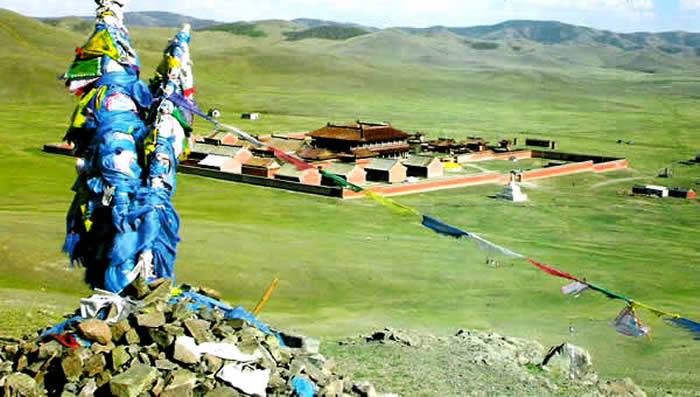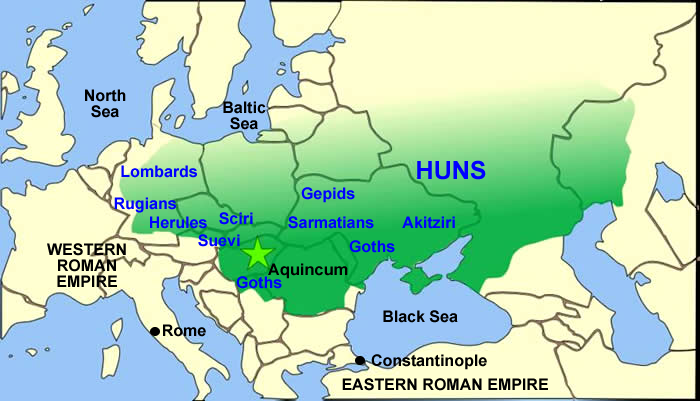 Empire of Attila the Hun
Empire of Attila the Hun

(Text by Duane R. Hurst © 2013)
Click on a link to view its information and pictures.
|
HUN LINKS: Significant Event: Huns Battle Alans Invasion of Gaul in 451 AD Main Cities: Aquincum Time: 400-453 AD Language: Gothic; Hunnic Personage: Attila Religion: Animism Related Country: Hungary; Russia Brief History: I have included only a few items concerning the history of this empire. A good source for more details can be found on Wikipedia or in history books. |
|
|
HISTORICAL NOTES:
Earliest mention of the Huns was by a Roman historian named Tacitus. Originally from an area near the Caspian Sea in 91 BC, they migrated to the Caucasus by 150 AD and later into Europe. Modern historians associate them with the Xiongnu (209 BC - 93 AD) of Mongolia, an empire that Modu Chanyu founded in 209 BC. In an attempt to escape the Huns, Germanic tribes crossed the Danube and Rhine rivers. Attila became ruler of the Hunnic empire, established by 370 AD. He led numerous incursions against the empires of Rome and Constantinople, which feared his skilled warriors. Such pressure led the Goths to defeat and kill the Emperor Valens in 378 AD during the Battle of Adrianople. The Eastern Roman Empire (Byzantine) often hired Huns as mercenaries, although Attila considered the pay as tribute. In 443 AD Attila invaded the Balkan region but failed to overcome the extensive walls of Constantinople. However, his warriors defeated a Roman army near Callipolis (modern Gelibolu). In 451 AD Attila led a large army against Roman forces under Flavius Aëtius in Gaul. The combined Roman and Visigoth army decisively defeated the Huns at the battle of Châlons. The Roman emperor had Aëtius assassinated as a reward for the unexpected victory. The following year Attila launched an invasion of northern Italy ostensibly to claim princess Honoria as his bride. This prompted escaping Romans to found the city of Venice. Attila withdrew after receiving a large tribute. Attila died in 453 AD immediately after his marriage to the Ostrogoth princess, Ildico (Hildegárd). The empire collapsed through internal dissension within one year. Attila's son, Ellac, ousted two other sons and ruled two years before his death in battle at Nedao in 454 AD. |
|
|
© Page Publisher: Duane R. Hurst
|


